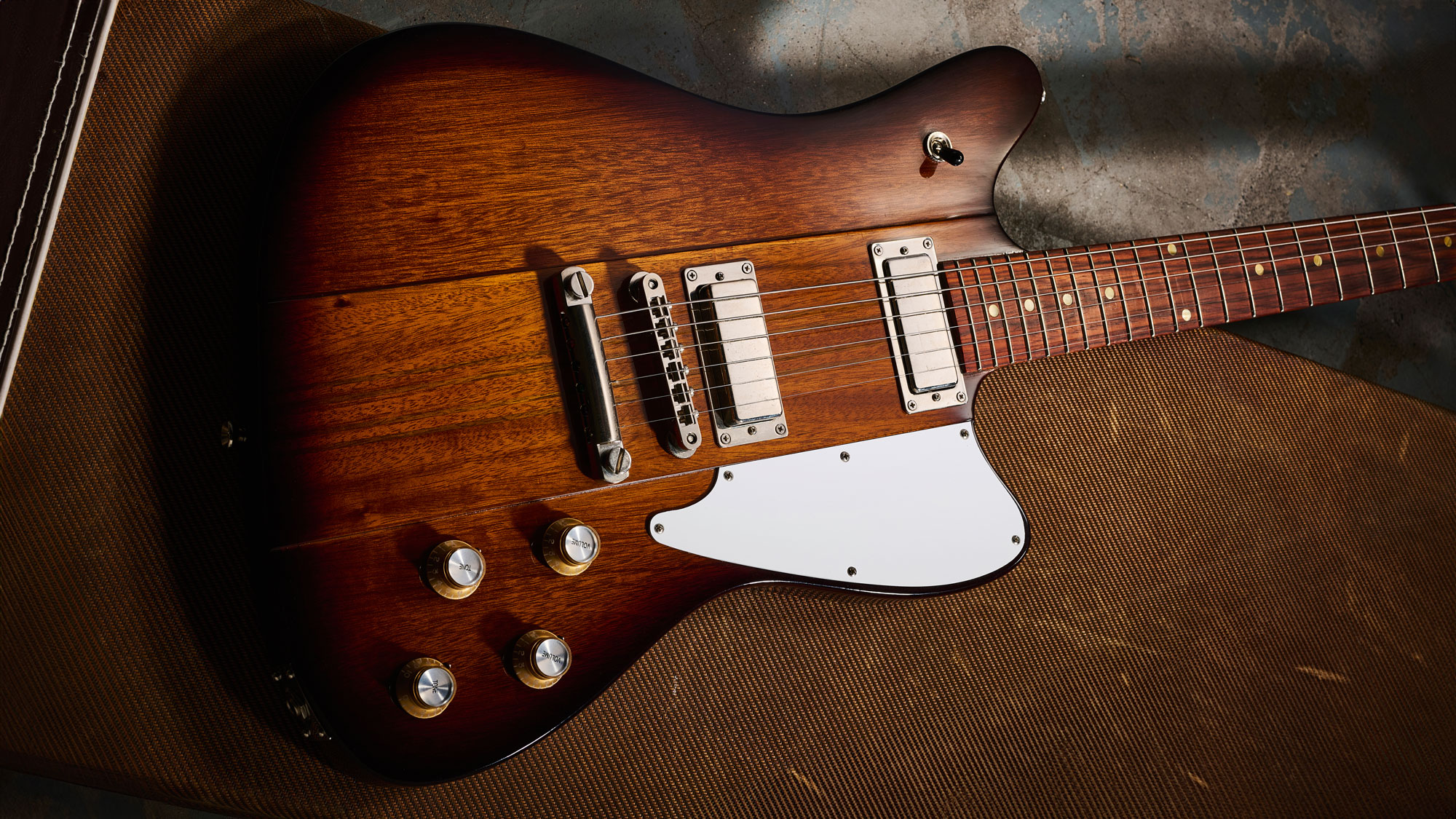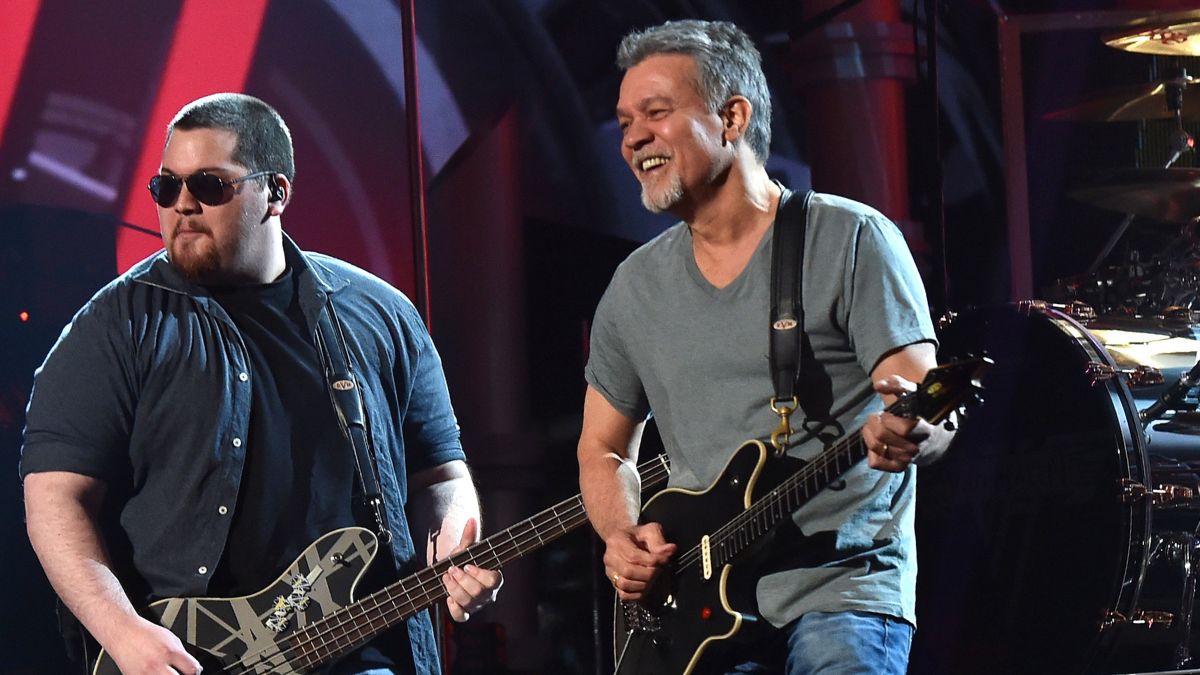Guitar World Verdict
This sensible, compact take on the Firebird not only removes the physical bulk but seems to enhance the voice, too, and while strapped on or seated nothing gets in the way. It feels like a vintage classic that never was.
Pros
- +
Beautifully crafted through-neck style.
- +
Original, very practical shape.
- +
One of the best necks you’ll get your hand around.
- +
Superb voicing from the Mojo pickups and vintage style controls.
Cons
- -
Not cheap, but then why should it be? Craft such as this costs.
You can trust Guitar World
A guitar design that was championed by a mere handful of players – Johnny Winter and Mike Campbell to name but two – the Gibson Firebird is a bona fide classic that far fewer of us own compared with the good ol’ Les Paul. Why?
Because it’s huge! Great for big stages, but for most of today’s musicians, well, good luck. It’s exactly the experience of Darren Horton, the solo Brit-builder behind Daniels Guitars: “I made a Firebird I[-inspired model] for someone last year. I loved the sound of it: it blew me away. But then it’s about 10ft long and I just thought, no.”
Darren dropped off his latest guitar with us in a rather old-looking tweed case, and you can’t help but do a double take when you open it. Is this an old Gibson that we’ve never seen before?
Of course not, but while the offset shape – which loosely emulates a downsized Jazzmaster but with a more defined upper horn – is very different from either the original ‘reverse’ or the later mid-’60s ‘non-reverse’ Firebird outlines. And along with its Daniels logo’d back-angled and three-a-side headstock, the actual construction, pickups and controls are an obvious homage to that first-series Firebird of old.
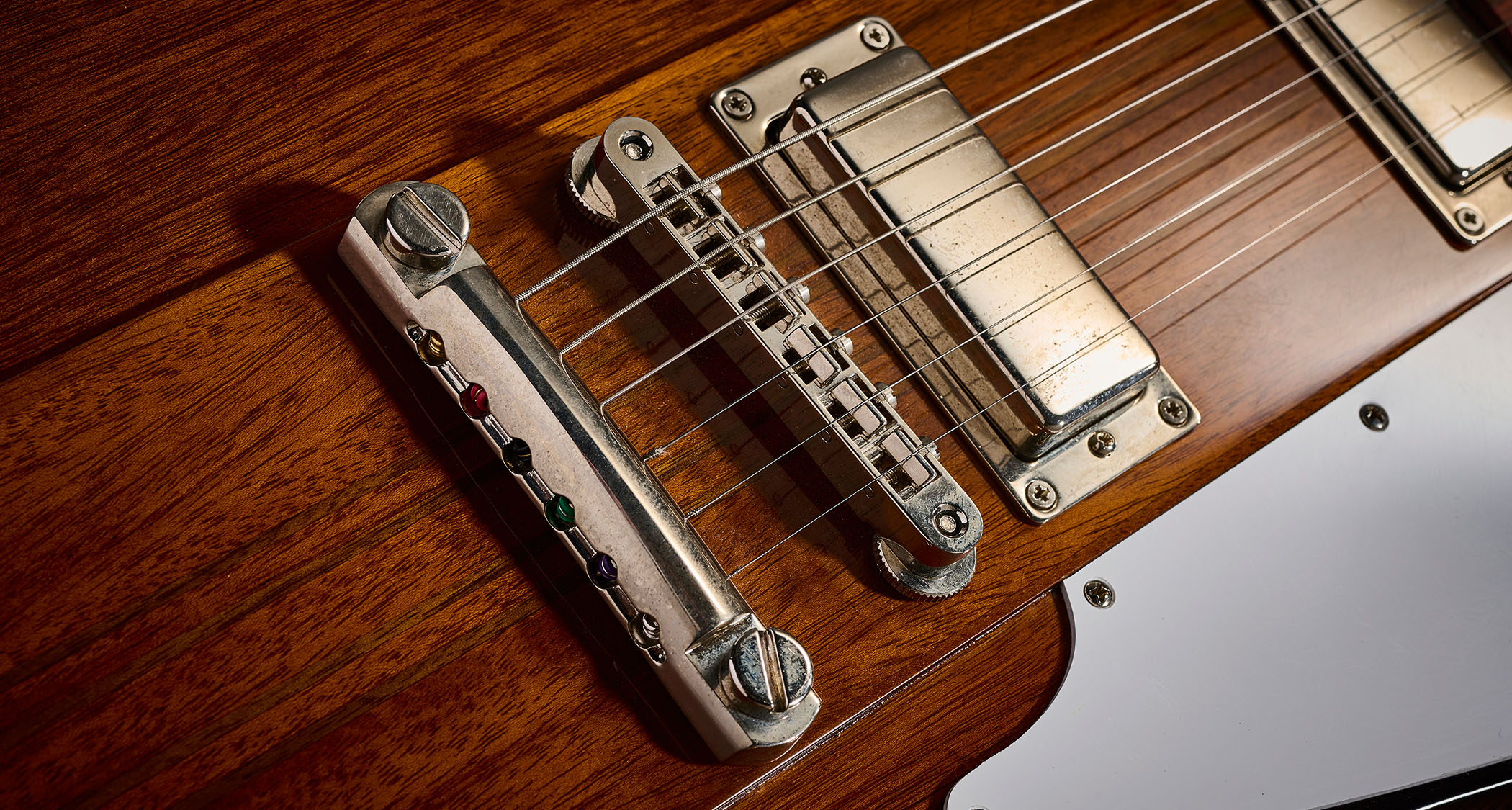
“It’s a slightly bigger offset than my Pugilist as I wanted to be able to load it with different vibratos and bigger pickups. I approached the design as purely a bit of fun.”
Construction mirrors the Firebird’s nine-piece mahogany/walnut neck-through laminate, introduced by Gibson in 1963.
As ever, the Faber hardware is superb. The tune-o-matic is very low to the body, while the tuners are Hipshot’s Grip-Lock style; once we’d tuned to pitch we barely touched them. It’s a very stable guitar
It forms the centre of the body, around 105mm wide, to which the pickups bridge and tailpiece are mounted and is a couple of millimetres thicker than the 36mm body ‘wings’, plus there’s a subtle ribcage contour on the back of the bass side and equally subtle forearm chamfer on the front. The ‘old Gibson’ illusion is certainly enhanced by the nitrocellulose darkburst finish that somehow manages to look a little used and older than it actually is.
All the latest guitar news, interviews, lessons, reviews, deals and more, direct to your inbox!
The neck, of course, is made from that same laminate, and the heel area is beautifully sculptured, while the cocobolo fingerboard – peppered with old-looking mother-of-pearl dots – is a vivid deep, dark red/brown that ties in perfectly with the finish itself.
As ever, the Faber hardware is superb. The tune-o-matic is very low to the body, while the tuners are Hipshot’s Grip-Lock style; once we’d tuned to pitch we barely touched them. It’s a very stable guitar.
Feel & Sounds
While Darren is becoming known for his lightweight builds, typically using obeche and Spanish cedar, the mahogany here – probably 100 years old, reckons Darren, from a reclaimed Liverpool bar-top – contributes to a weight of 3.58kg (7.88lb) that’s far from heavy.
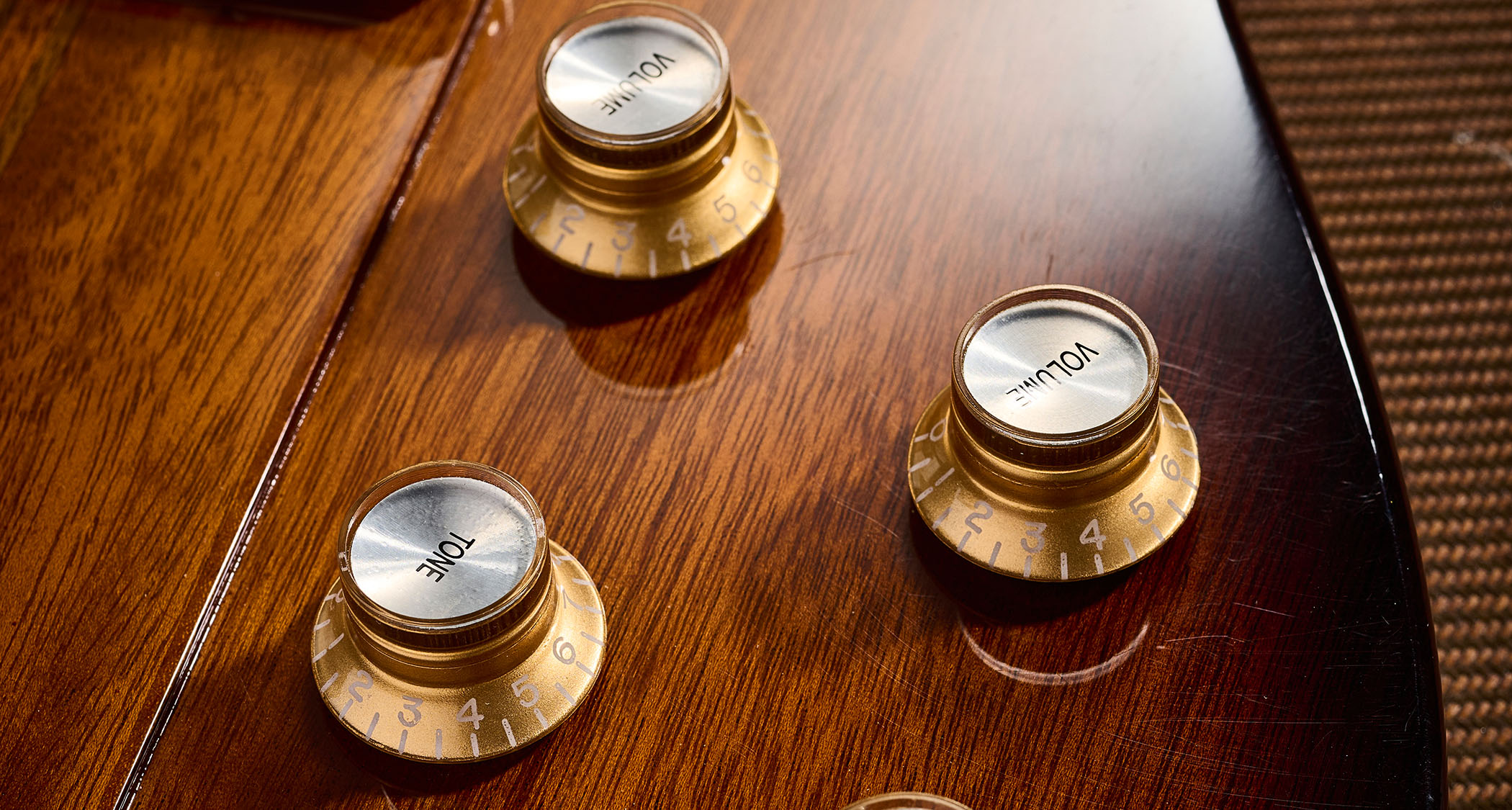
The guitar sits perfectly on your lap and feels exceptional on a strap: a Firebird this isn’t! The neck shape is equally good, boasting Darren’s preferred ‘soft V’ with nicely relaxed shoulders and a depth of just over 22mm at the 1st fret that fills out to a shade under 25mm by the 12th, which sounds bigger than it feels.
There’s some light edge rolling to the fingerboard, the fretwire has plenty of height but is relatively narrow, and there’s a good airiness to the setup and string height – you encounter a bit of fight when you want to dig in.
Mojo’s Firebird pickups are an obvious choice here and maker Marc Ransley states that “the Firebirds have vertical bar magnets within the coil that act as the polepieces. In a sense, this is more like a Fender pickup and it adds brightness and clarity.”
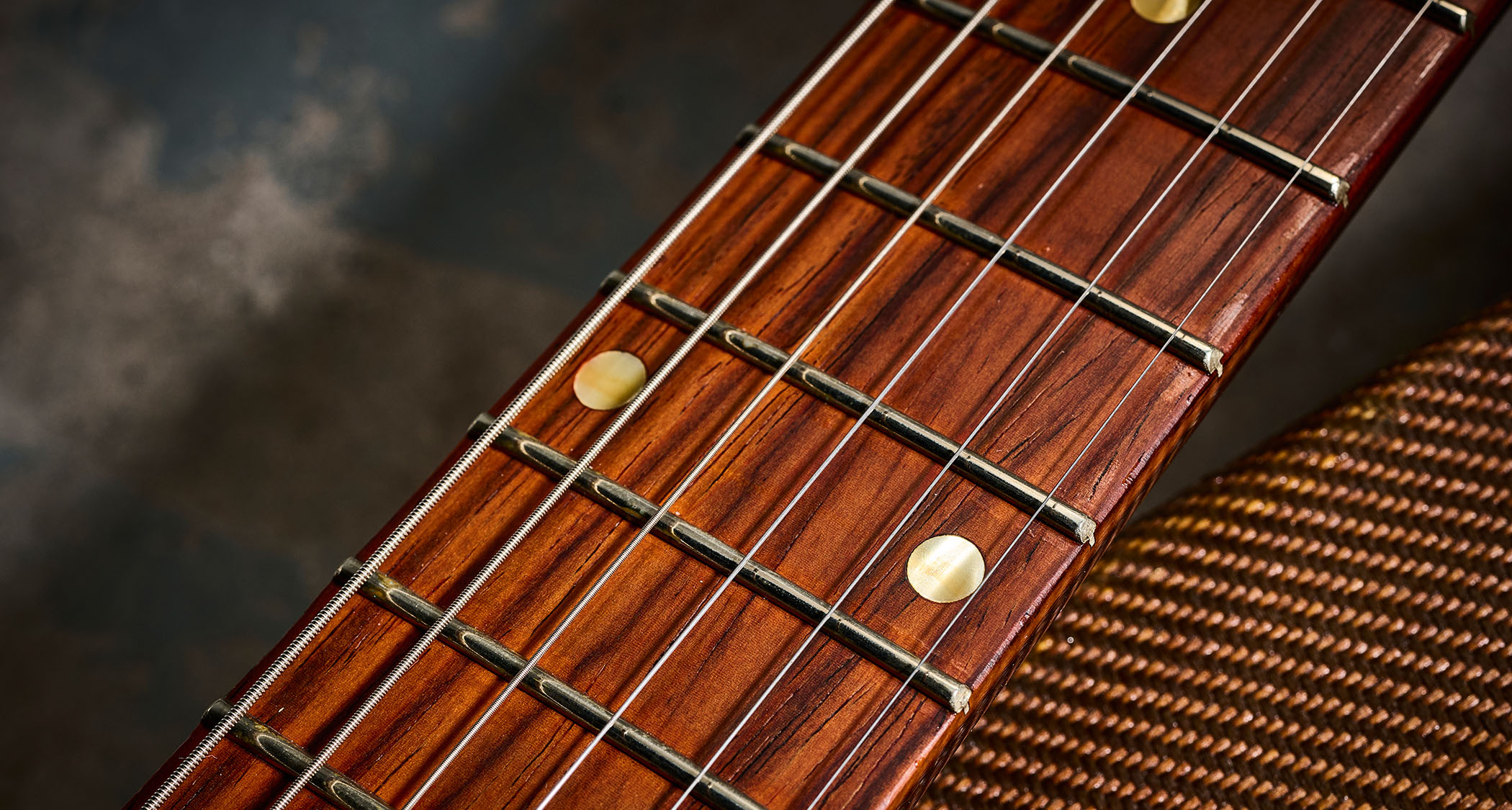
That’s pretty much what we hear – a rather evocative hybrid that seems to sit between our reference Telecaster and Les Paul Classic with its Burstbucker 1 and 2 combo.
There’s a little more fullness compared with the former, and a little more ‘single coil’ compared with the latter. A humbucker pickup that sounds like a good single coil? Well, that’s what we hear. There’s definitely single-coil-like clarity and bite at the bridge, with a neck pickup that cleans up the mud of a humbucker but retains some Fender-y edge.
You have to hear these sounds, not least the mix that has a very musical depth to the bouncy, wider Tele-like voicing.
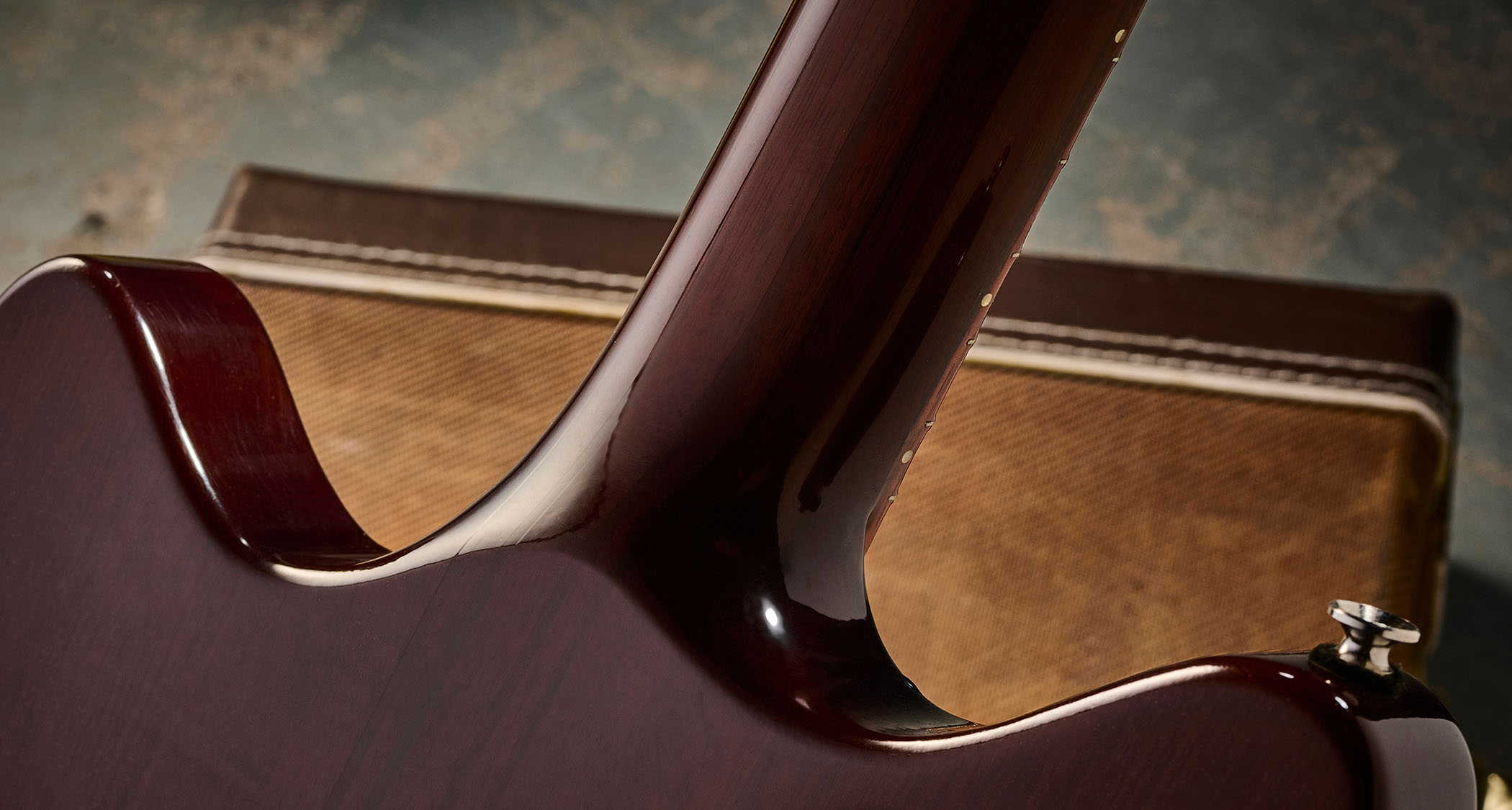
Then, of course, you have the classic individual pickup volume and tone controls – wired vintage style – that allow plenty of shading, not least in that middle position.
Through any decent amp, you can move from almost acoustic-like clarity with the volume and tone pulled back to Townshend-like ’60s punch at the bridge and that clear but full Fender-y neck voice with simple control adjustment.
We’re generalising because the guitar is so full of subtlety when you start using those controls, especially at the bridge. It’s quite brightly voiced with less of that Gibson-like mahogany/P-90 grind, but the chime, jangle and depth are truly wonderful.
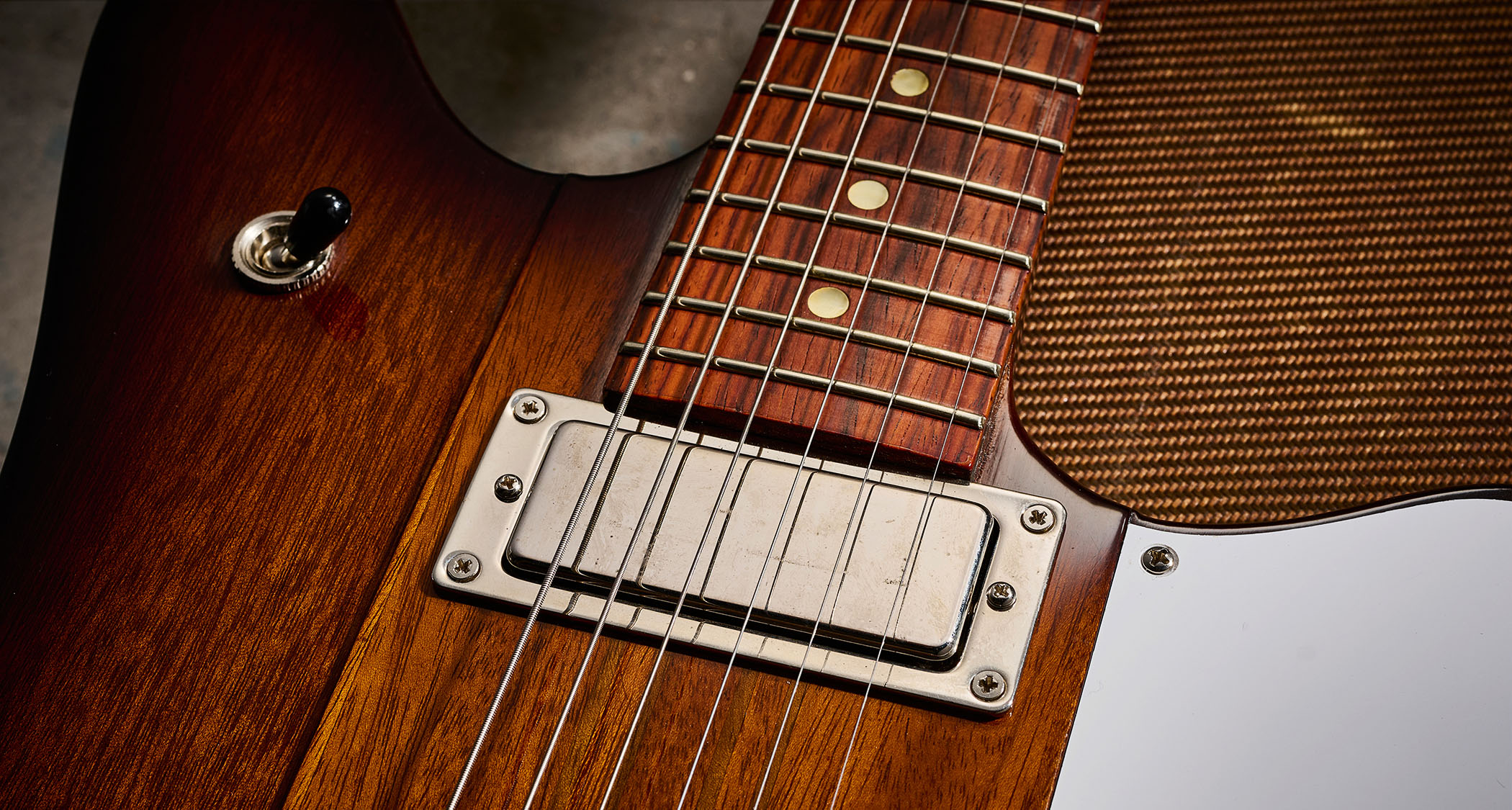
Verdict
Not for the first time we got completely lost in a guitar we’re supposed to be writing about. Somehow this sensible, compact take on the ol’ ’Bird not only removes the physical bulk but seems to enhance the voice, too, and while strapped on or seated nothing gets in the way. It doesn’t feel new, although there’s no relicing here; it just feels like a vintage classic that never was.
It’s true that plenty of makers large and small have used the Firebird style, but this one is totally a one-off and you can choose exactly the specification you want, including a more regular glued-in neck. Just like every other Daniels guitar we’ve played, whatever you go for, it’ll be a world-class, vintage-informed instrument like this Gravitas. When you’re ready, give Darren a call.
Specs
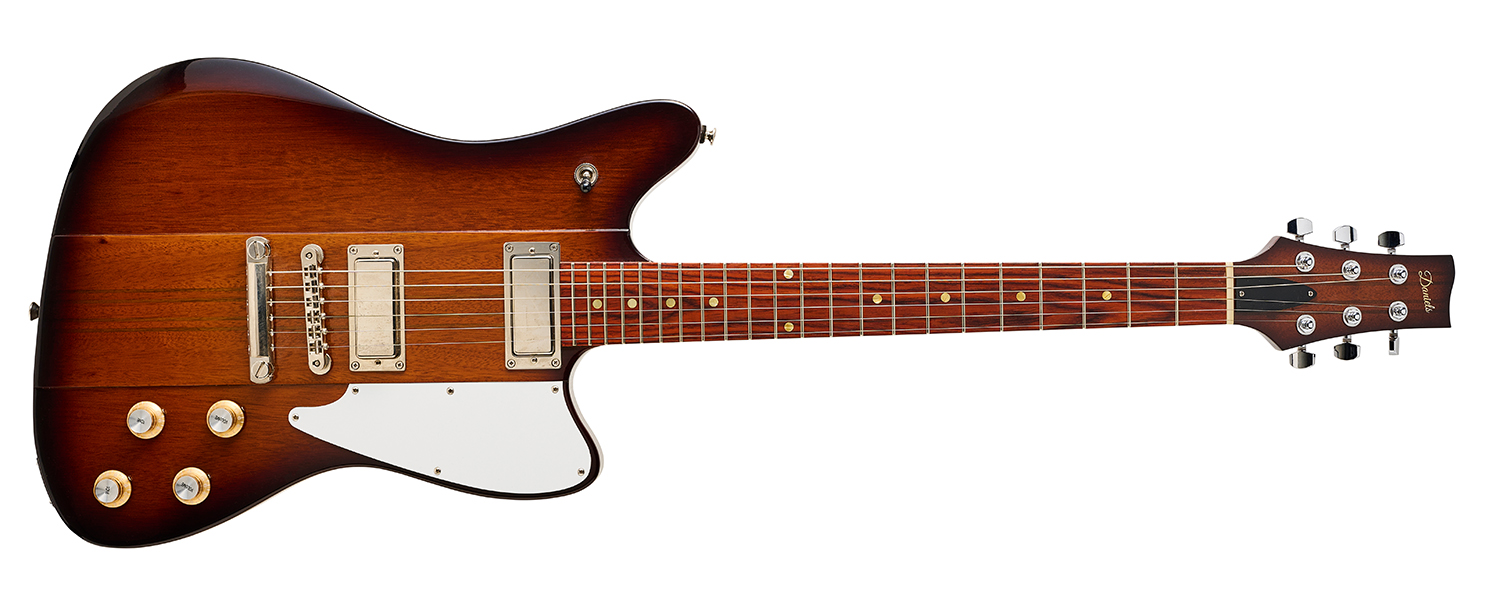
- PRICE: £3,999 (inc case)
- ORIGIN: UK
- TYPE: Offset-shaped solidbody electric
- BODY: Mahogany wings
- NECK: 9-ply mahogany/walnut through-neck
- SCALE LENGTH: 629mm (24.75”) (rule of 18)
- NUT/WIDTH: Unbleached bone/43.23mm
- FINGERBOARD: Cocobolo, m-o-p dot inlays, 305mm (12”) radius
- FRETS: 22, medium jumbo (Jescar 47095)
- HARDWARE: Faber ABR-’59 tune-o-matic-style bridge with TP-’59 lightweight stud tailpiece, Hipshot Grip-Lock rear-lock tuners – nickel‑plated
- STRING SPACING, BRIDGE: 51.5mm
- ELECTRICS: 2x Mojo Firebird humbuckers, 3-way toggle pickup selector switch, individual volume and tone controls
- WEIGHT (kg/lb): 3.58/7.88
- OPTIONS: Just ask!
- RANGE OPTIONS: Daniels offers 2 other styles: offset Pugilist (from £2,999) and more classic single-cut Royale (from £4,999). Like the Gravitas, these styles can be used as the basis for your custom dream
- LEFT-HANDERS: Yes
- FINISHES: Vintage Tobacco Burst (as reviewed) – gloss nitro
- CONTACT: Daniels Guitars

Dave Burrluck is one of the world’s most experienced guitar journalists, who started writing back in the '80s for International Musician and Recording World, co-founded The Guitar Magazine and has been the Gear Reviews Editor of Guitarist magazine for the past two decades. Along the way, Dave has been the sole author of The PRS Guitar Book and The Player's Guide to Guitar Maintenance as well as contributing to numerous other books on the electric guitar. Dave is an active gigging and recording musician and still finds time to make, repair and mod guitars, not least for Guitarist’s The Mod Squad.
